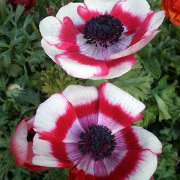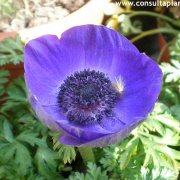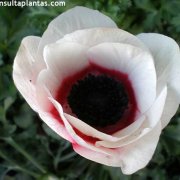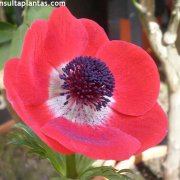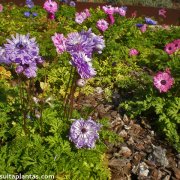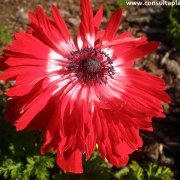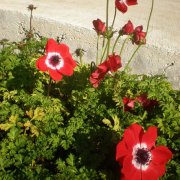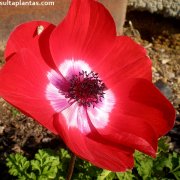Care of the rhizomatous plant Anemone coronaria or Poppy anemone |
|
The genus Anemone, family Ranunculaceae, comprises more than 100 species of perennial herbaceous plants native to the Northern Hemisphere (Europe, China, Siberia, North America, the Middle East). Some other species are: Anemone coronaria, Anemone x hybrida, Anemone narcissiflora, Anemone fulgens, Anemone nemorosa, Anemone ranunculoides, Anemone hepatica, Anemone blanda, Anemone pulsatilla, Anemone sylvestris. Common names: Spanish marigold, Poppy anemone, Windflower. This species is native to the Mediterranean region. They are small herbaceous plants with irregular rhizomes. The leaves arise from the rhizomes and are usually lobed; There are other leaves that appear on the flower stem and form an involucre (whorl of bracts located at the base of a flower) around the flower. The flowers can be yellow, white, red, pink, purple, etc. They bloom in spring or summer-autumn, depending on the variety. Spanish marigold is used for the banks of ponds, rockeries in shade or in pots for terraces or balconies. It's also used as a cut flower. Anemone coronaria needs exposure to semi-shade or shade and medium-high ambient humidity. Poppy anemone resists weak and occasional frosts. The ideal soil can be a mix of light garden substrate with 1/3 coarse sand and 1/3 leaf mulch. Water frequently (every 1 or 2 days) in spring and summer but without overwatering; reduce watering when flowers wilt and then remove them. When the plant is yellow, the rhizomes must be unearthed and stored in a dry and cool place for the next season. Windflower propagates from seeds or by rhizome division. |
Images of the rhizomatous plant Anemone coronaria or Poppy anemone |
Find plants
Anemone coronaria or Poppy anemone | Care and Growing
© 2025 FavThemes
